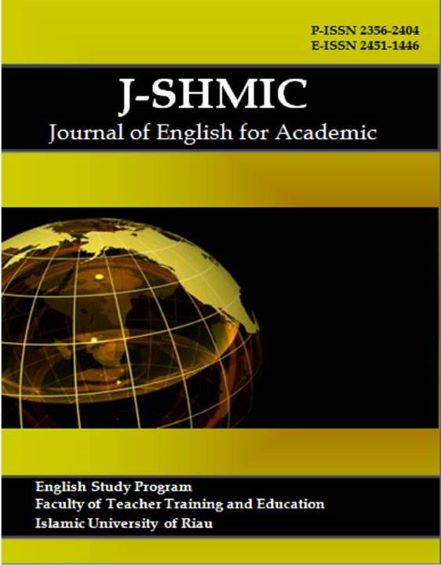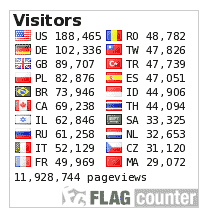Correlation of Students’ Listening Comprehension Score With Students’ Learning Styles at Students of English Department at University of Muhammadiyah Gresik
Keywords:
Listening Comprehension, visual learning style, auditory learning styleAbstract
Listening ability is an important component of language teaching and learning as it tends to improve faster than speaking ability and frequently influences skill development when learning anything new. Meanwhile, in order to accomplish excellent academic outcomes, students need to consider their learning styles and teachers need to consider various students’ learning style. This study aims to investigate the correlation between the listening abilities of learners and their learning styles. The participants were students of English education study program, faculty of teaching and educational sciences, Muhammadiyah University of Gresik, with 48 males and 52 female students participating. This study employed quantitative approaches using a questionnaire to assess students' learning styles, a test to assess students' listening comprehension scores, and an interview as a few sample about students’ perception. The data analyzed used SPSS Pearson's Correlation Coefficients and thematic analysis. The level of probability (p-value) significance (sig.2-tailed) resulted in .003. Since, the p-value (.003) was less than .05, Ha (alternative hypothesis) was accepted and Ho (null hypothesis) was rejected. As a result of the acceptance of the Ha (alternative hypothesis), researchers discovered there is a significant correlation connecting both visual and auditory learning styles and listening comprehension. The impact of this study to help students aware with their learning styles and teachers need to consider efficient learning activities with students’ various learning style.
Downloads
References
Afriani, E. P. (2016). The Relationship Between Learning Style and Listening Comprehension Achievement of Twelfth Grade Students of SMA Pusri Palembang. Palembang: UIN RADEN FATAH PALEMBANG.
Barbe, W & Milone Jr, M. (1981). What we know about modality strengths. New York City: Association for Supervision and Curriculum Development.
Bingol, M., et al. (2014, November). Listening Comprehension Difficulties Encountered by Students in Second Language Learning Class Education View Project. Journal of Educational and Instructional Studies, 4(4), 1 - 6.
Byrnes, H. (1984). The Role of Listening Comprehension: A Theoretical Base. Foreign Language Annals, 17(4), 317.
Creswell, J. W. (2012). Educational Research Planning, Conducting, and Evaluating Quantitative and Qualitative Research (Vol. 4). Nebraska: University of Nebraska–Lincoln .
Donald, A., et al. (2010). Introduction to research in education. New York City: Holt, Rinehart & Winston.
Ellis, R. (1986). Understanding Second Language Acquisition. TESL Canada Journal, 6(2), 95 - 101.
Gilakjani, A. P. (2012). Visual, Auditory, Kinaesthetic Learning Styles and Their Impacts on English Language Teaching. Journal of Studies in Education, 2(1), 104 - 113.
Gilakjani, Abbas & Ahmadi, Mohammad. (2011, September). A Study of Factors Affecting EFL Learners' English Listening Comprehension and the Strategies for Improvement. Journal of Language Teaching & Research, 2(5), 977 - 988.
Gilakjani, Abbas & Ahmadi, Sayedeh. (2011). The Effect of Visual, Auditory, and Kinaesthetic Learning Styles on Language Teaching. IACSIT Press, 5(2), 469 - 472.
Gilman, Robert & Moody, Reno. (1984). What Practioners Say About Listening: Research Implicants for the Classroom. Foreign Language Annals, 17(4), 331.
Harmer, J. (2003). The Practice of English Language Teaching. English Language Teaching, 57(4), 401 - 405.
Maghfirah, T. (2018, February). Students' Reading and Listening Comprehension Based on Their Learning Styles. International Journal of Education, 10(2), 107 - 113.
Mueller, D. (1992). An interactive guide to educational research. Boston: Allyn and Bacon.
Naning, Z & Hayati, R. (2011, June). The Correlation between Learning Style and Listening Achievement of English Education Study Program Students of Sriwijaya University. Jurnal Holistics, 3(5), 1 - 11.
Putri, A & Ayu, M. (2023, June). The Correlation Between Learning Style and Students' Listening Skills in Fifth-Grade Students at SD Negeri 1 Gedung Meneng. Journal of English Language Teaching and Learning, 4(1), 26 - 33.
Rini, A. L. (2017). Revealing Students Listening Comprehension Difficulties and Strategies in Intermediate Listening Class. Yogyakarta: Sanata Dharma University.
Rizky, C. S. (2013). Students' English based on their learning style (A Causal comparative study at second grade students SMP ISLAM Harapan Ibu). Jakarta: Universitas Islam Negeri Jakarta.
Saadi, I. A. (2012). An Examination of the Learning styles of Saudi Preparatory School Students who are High or Low in Reading Achievement. Melbourne: Victoria University.
Wang, L. (2007). Variation in Learning Styles in A Group of Chinese English as A Foreign Language Learners. International Education Journal, 8(2), 408 - 417.
Published
How to Cite
Issue
Section
Copyright (c) 2024 Chico Hedar Pratama, Khoirul Anwar

This work is licensed under a Creative Commons Attribution-ShareAlike 4.0 International License.
This is an open-access article distributed under the terms of the Creative Commons Attribution-ShareAlike 4.0 International License which permits unrestricted use, distribution, and reproduction in any medium. Users are allowed to read, download, copy, distribute, search, or link to full-text articles in this journal without asking by giving appropriate credit, providing a link to the license, and indicating if changes were made. All of the remixes, transform, or build upon the material must distribute the contributions under the same license as the original.











